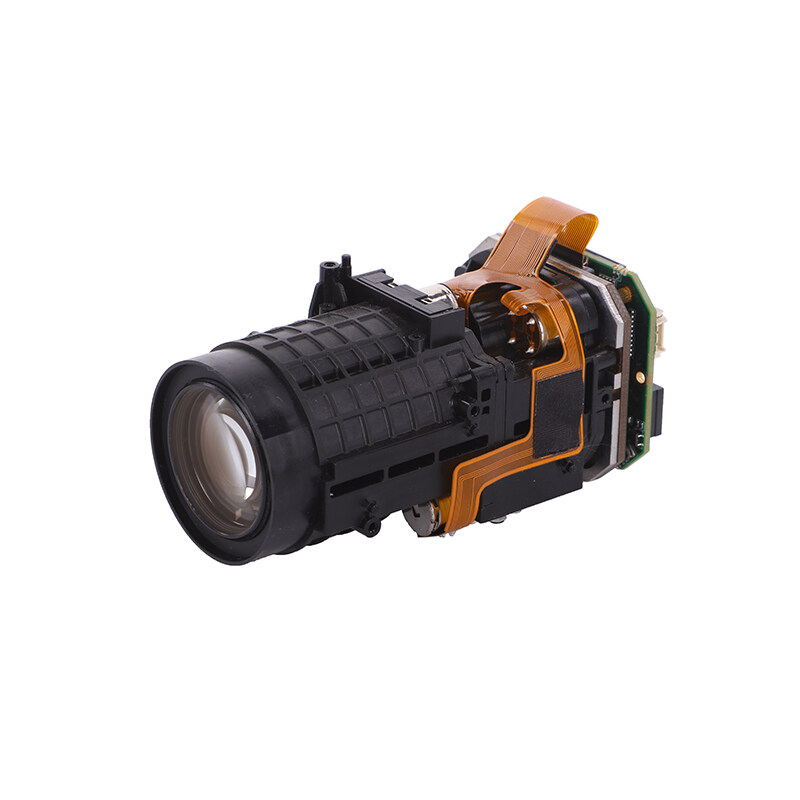1. Introduction to Drone Cameras and UAVs
In today's rapidly evolving technological landscape, drones, or unmanned aerial vehicles (UAVs), equipped with high-caliber camera modules have become indispensable tools for various industries. These sophisticated UAV camera modules play a critical role in capturing high-resolution aerial imagery and video footage, offering perspectives that were once unattainable. The fusion of advanced optics, stabilization technology, and autonomous flight systems has significantly broadened the applications and appeal of drone cameras. This article explores the advancements, applications, and future prospects of UAV camera modules, framing them within the broader context of technological progress.
2. Evolution of Aerial Photography
● 2.1 From Balloons to Drones
The journey of aerial photography began long before the advent of drones, with the use of balloons in the late 19th century marking the genesis of capturing images from the sky. This was followed by the integration of cameras into aircraft during the early 20th century, revolutionizing the scope and scale of aerial imaging. With each technological leap, the potential for aerial photography has expanded exponentially. Drones, equipped with state-of-the-art UAV camera modules, represent the latest evolution, offering unparalleled flexibility and precision.
● 2.2 Key Technological Advancements
The evolution from cumbersome analog devices to today's digital UAV camera modules has been driven by several key technological advancements. These include improvements in sensor technology, image stabilization, and miniaturization, which allow for high-resolution imaging in compact formats. The integration of real-time data processing and transmission technologies has further enhanced the capability of UAVs, enabling them to perform complex tasks with remarkable efficiency.
3. Technical Features of Modern Drone Cameras
● 3.1 High-Resolution Imaging Capabilities
Modern UAV camera modules are equipped with high-resolution sensors capable of capturing stunning detail, essential for applications such as mapping, inspection, and filmmaking. These sensors provide the precision needed for intricate tasks, ensuring that every pixel of data is usable and actionable. The capability to adjust resolutions in accordance with task requirements makes these drones highly versatile.
● 3.2 Stabilization and Gimbal Systems
Ensuring stable and clear imagery is a paramount concern for UAV camera modules. Cutting-edge stabilization and gimbal systems are crucial in maintaining image clarity, regardless of flight conditions. These systems counteract UAV movements, vibrations, and external forces, enabling the camera to shoot crisp and steady footage even during dynamic operations.
4. Applications of Drone Cameras
● 4.1 Uses in Real Estate and Construction
In real estate and construction, UAV camera modules have become indispensable tools, offering a bird's eye view of properties and construction sites. They facilitate detailed inspections, progress monitoring, and promotional materials that provide clients with a comprehensive view of assets. This capability not only increases operational efficiency but also enhances marketing impact.
● 4.2 Impact on Wildlife Monitoring
Drones equipped with advanced camera modules play a vital role in wildlife monitoring and conservation efforts. By capturing high-resolution images and video from above, researchers can track animal movements and habitats with minimal disruption. This has significant implications for studying biodiversity and implementing preservation strategies.
5. Legal and Ethical Considerations
● 5.2 Regulations Governing Aerial Surveillance
Regulatory bodies worldwide have begun to draft and enforce rules governing the use of UAV camera modules in aerial surveillance. These regulations are designed to ensure safety, privacy, and accountability, balancing technological advancement with societal concerns. Compliance with these regulations is crucial for operators and manufacturers alike.
6. The Role of Drones in Surveillance
● 6.1 Differences Between Overt and Covert Operations
UAV camera modules are deployed in both overt and covert surveillance operations, each with distinct objectives and protocols. Overt surveillance is often used in disaster management and law enforcement to provide transparency and accountability. In contrast, covert operations require discretion and are typically conducted in national security or criminal investigations.
● 6.2 Use in Security and Law Enforcement
In the realm of security and law enforcement, UAV camera modules offer significant advantages. They allow for real-time monitoring and data collection, enhancing situational awareness and decision-making capabilities. These tools are invaluable in large-scale events, search and rescue missions, and crime scene investigations.
7. Future Trends in Drone Technology
● 7.1 Integration with AI and Machine Learning
The future of UAV camera modules is closely tied to advancements in artificial intelligence (AI) and machine learning. These technologies promise to enhance the autonomy and functionality of drones, enabling them to process and analyze data in real-time, thereby improving their decision-making capabilities.
● 7.2 Potential for Autonomous Flight Systems
Autonomous flight systems represent a significant trend in UAV technology. These systems promise to reduce human intervention, increase efficiency, and minimize errors. As these technologies evolve, they will likely lead to even greater integration of UAV camera modules into various industries.
8. Advantages of Using Drones in Various Industries
● 8.1 Cost Efficiency and Time Savings
UAV camera modules offer substantial cost and time savings across multiple industries. Their ability to quickly and efficiently capture data reduces the need for traditional methods, which are often more labor-intensive and expensive. This makes drones an attractive option for businesses looking to optimize their operations.
● 8.2 Accessing Hard-to-Reach Locations
One of the most significant advantages of UAV camera modules is their ability to access hard-to-reach areas. Whether inspecting infrastructure or conducting environmental assessments, drones can safely and efficiently gather data in locations that would be challenging or dangerous for human access.
9. Challenges Faced by the Drone Industry
● 9.1 Technical Limitations and Battery Life
Despite their numerous advantages, UAV camera modules face technical challenges, particularly concerning battery life and flight duration. While advancements are being made, energy efficiency remains a critical area for improvement to expand the operational capabilities of drones.
● 9.2 Public Perception and Acceptance
Public perception and acceptance of drones present another challenge. Concerns over privacy, safety, and noise pollution can impact the adoption of UAV technology. Addressing these concerns through education and transparent policies is essential for broader acceptance.
10. Conclusion: The Impact of Drone Cameras
● 10.1 Summary of Benefits and Drawbacks
UAV camera modules have undeniably transformed the landscape of aerial imaging and surveillance. Their benefits include enhanced efficiency, precision, and accessibility, while challenges such as privacy concerns, regulatory compliance, and technical limitations remain. Balancing these factors will be crucial as the industry continues to evolve.
● 10.2 The Future Outlook for Drone Technology
Looking ahead, the integration of UAV camera modules with emerging technologies offers exciting possibilities. As drones become more autonomous and intelligent, their applications will likely expand even further, solidifying their role as essential tools across a range of industries.
Introduction to Huanyu Vision
Hangzhou Huanyu Vision Technology Co., Ltd., established in July 2019, has swiftly become a leading provider of zoom camera modules in China. Certified as a National High-tech Enterprise in early 2021, Huanyu Vision stands out due to its professional technical support and sales team, which exceeds 50 staff members dedicated to fostering strong partnerships. Huanyu Vision's core R&D team, boasting over a decade of experience from global industry leaders, continues to advance audio and video technologies. The company's product range, utilized in UAVs and other sectors, underscores its commitment to innovation and excellence.
Post time: 2025-02-26 09:37:14





